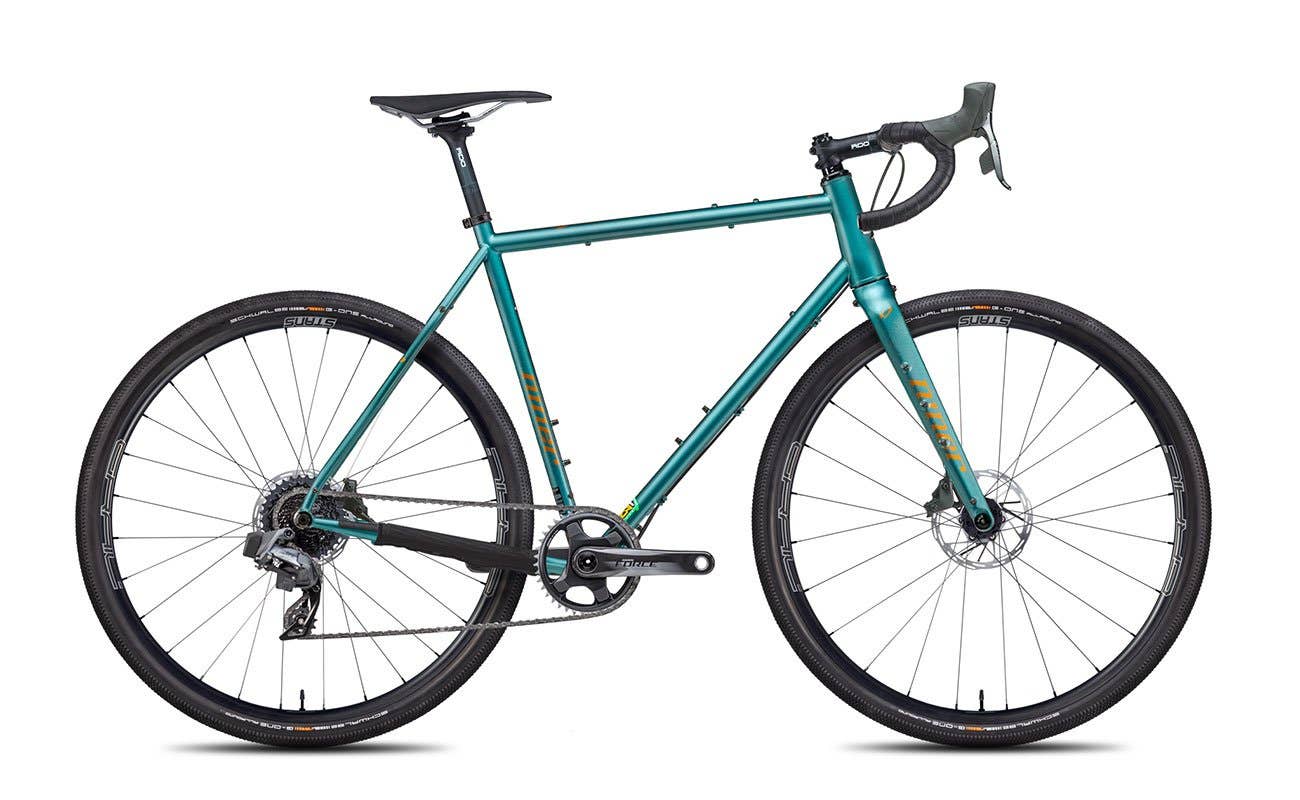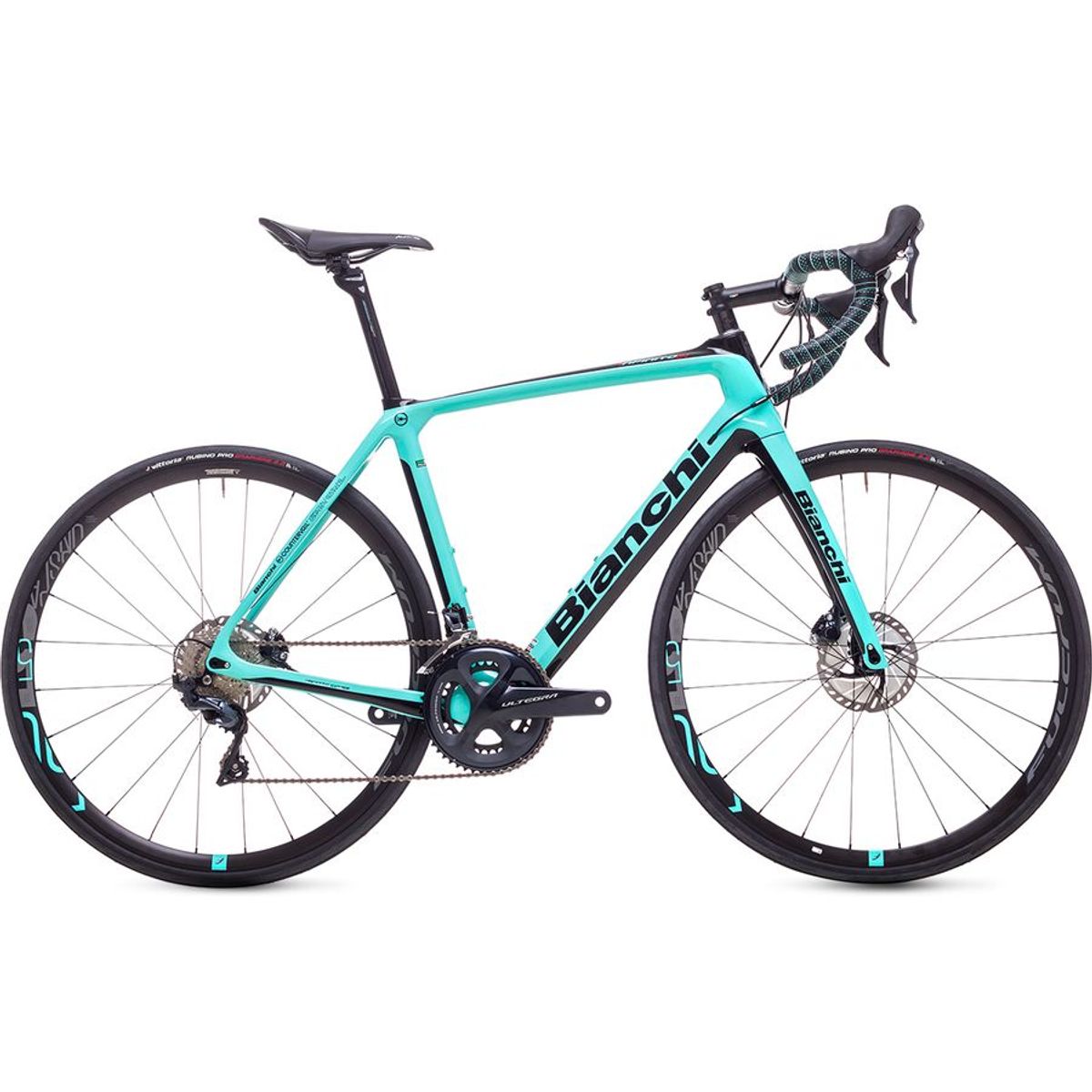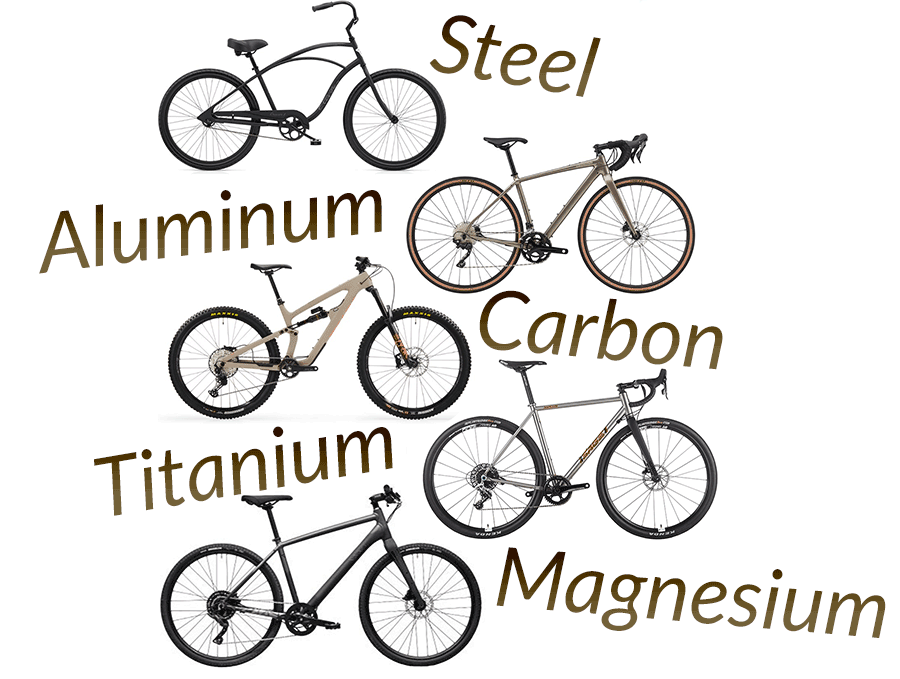Bicycle Frame Material Guide: Aluminum, Carbon, and Steel and Titanium Examined
Down here you’ll get a brief overview of some of the pros and cons of each bike frame material.
Throughout time, different lightweight metals have been used to build bicycles, and by today, there are about four out of the five main materials that are still being used. Find out which ones and why they are around!
Aluminum

Ibis – Ripmo AF, an aluminum frame full-suspension mountain bike
- The 6061 aluminum is one of the most widespread aluminum mixtures used among bicycles.
- Alloy vs Aluminum. Aluminum is a pure metal found on earth’s crust while alloy is a mixture of 2-3 metals.
- 6061 vs 7005. 6061 bike frames are cheaper to make, 7005 contain zinc as an aluminum additive which makes the frames more durable, and expensive.
Aluminum is used in bicycle frames because of its relative strength and weight compared to its low cost. While it may not be as strong as steel or as light as carbon, it’s cheaper than both, and it’s strong and light enough for most bikes.
Professional road cyclists willing to pay more to save on weight may opt for carbon over aluminum, and cycle tourists who need strength may opt for steel over aluminum. However, for the average everyday cyclist, an aluminum bicycle frame offers the best balance of cost, weight, and strength.
Aluminum is also very versatile – it can be mixed with other metals and butted at the joints to increase strength and it can be hydro-formed to achieve unique frame characteristics. Some modern aluminum road bikes use advanced technology to provide an even higher quality frame than low-cost carbon frames.
However, aluminum frames offer the least comfortable cycling experience. Unlike carbon or steel frames that dampen vibrations, aluminum is very stiff and transfers all vibrations to your hands. This is why expensive aluminum bikes usually have carbon forks.
Aluminum mountain bikes remain popular due to the perception that carbon is a weaker material, but with modern technology, many professional MTB riders are now switching to carbon.
- Cheap
- Widely available
- Decently lightweight
- Harsh, uncomfortable ride
- Difficult to repair
Steel

Niner RLT 9 steel gravel bike
Steel bike frames are as old as bicycles themselves – indeed, for the first century or so after modern bikes were invented, steel was the only option. Only in the 1970s did manufacturers start exploring aluminum alloys and other materials for bicycle frame building.
Steel commonly comes in two forms: cheaper, traditional carbon (hi-tensile) steel, and the more modern chromium-molybdenum (Chromoly) steel alloy. The chromoly bike frame is stronger and lighter, but more expensive than hi-tensile steel.
Best Steel Gravel Bikes in 2025: Comfort and Simplicity Combined
Due to the weight, steel road bikes are less common these days, but some bike variations that require stronger frames sometimes use steel. Niche manufacturers have produced steel gravel bikes or steel cyclocross bikes for the stronger frame and more comfortable ride than aluminum.
Steel vs Aluminum bike frames
Although quite strong, steel is one of the heaviest materials and nowadays has widely been replaced by aluminum as the standard bike frame material. However, steel bicycle frame enthusiasts swear by the smooth, comfortable ride that it offers, often quoting their favorite saying “Steel is real”.
Aluminum, by comparison, is very unforgiving and can get uncomfortable over long distances. For this reason, steel is the frame material of choice by long-distance cycle tourists.
- Strong and durable
- Comfortable ride
- Easy to repair
- Heavy
- Prone to rust
Carbon

Bianchi – Infinito, a carbon road bike
Carbon fiber bike frames are manufactured using a bundle of fibers bound together with glue to form a ply. When done correctly, this creates a very strong, lightweight material that is easy to shape and mold. In the professional cycling world, carbon fiber is the frame material of choice by almost all competitive cyclists.
However, carbon fiber is very brittle, making it more susceptible to heavy impact damage. This is why it has taken a long time to gain acceptance in the mountain biking scene. The process required to make them strong enough for rough cycling is costly, which is why carbon bikes are so expensive.
Many professional road bikes these days use an increasing number of carbon components to reduce weight, including carbon bike wheels, seat posts, handlebars, and even derailleurs. Despite its stiffness, carbon has an absorbent quality that makes it very comfortable while maintaining a highly responsive feel.
Carbon vs Aluminum
Modern carbon bikes use advanced technology to create frames that are now even stronger than aluminum and still much lighter. That’s why carbon fiber is quickly becoming the standard material of choice in almost all cycling disciplines, including road, gravel, and MTB, even for beginner cyclists.
Titanium (Ti)
Silver color, high density, high strength

Sage – Barlow, a cyclocross titanium bike
Titanium bikes are rare because of the exceptionally complex and expensive manufacturing process required to make them. Due to the way titanium reacts to heat, titanium frame tubes need to be welded in an oxygen-free environment. This means you will need a special factory and highly trained professionals to weld a titanium bike frame.
Since it’s one of the strongest, lightest materials that we know of, titanium is typically used in aerospace and marine construction. It’s as strong and durable as steel, and almost as lightweight as carbon. Naturally, this makes it highly attractive to bike frame builders.
Review Of Sage Titanium Bicycles
The few titanium bike frames available on the market are often more expensive than their carbon counterparts. Aimed at niche buyers with large budgets, titanium bikes are more of a collector’s item than a bike for everyday use.
Titanium frames are instantly recognizable by their shiny, chrome-like appearance that manufacturers usually leave unpainted.
Titanium vs Carbon
The main advantage of titanium is its strength and long-term durability. This makes it more attractive than carbon for certain disciplines like touring which involves heavy use. While both materials are lightweight, carbon is stiffer and more responsive than titanium, making it a better fit for road racing.
A titanium mountain bike makes a good alternative to carbon as it’s much stronger but has the same lightweight characteristics.
Magnesium (Mg)

VAAST A/1 magnesium bike
Magnesium bike frames are very rare and the technology is still in development, stunted largely by the growing popularity of carbon fiber. Bike manufacturers only began experimenting with magnesium as a frame material in the past few years, hoping to discover a cheaper alternative to carbon.
However, although it is very light, the material is softer than aluminum, prone to corrosion, and very difficult to work with. The Allite cycle company released a Super Magnesium bike in 2018, drawing much attention to the material as a more lively, forgiving alternative to carbon.
Engineers continue to work with magnesium and other metals in the hope to create an alloy that is less corrosive and more stable. However, with carbon fiber frames getting cheaper every year, we may never see magnesium frames reach the mainstream.
Magnesium vs Titanium
In theory, magnesium represents far better value for money than titanium, since it offers a similar level of strength and is lighter than aluminum. However, until engineers can find a way to manufacture magnesium in a consistent and efficient way, it will never achieve the same mass appeal as other materials.
Even though it is far more expensive, the reliability and proven strength of titanium makes it a more attractive option to frame manufacturers
Conclusion: Characteristics, Pricing, Usage

Carbon fiber is probably the best choice of material for most cycling disciplines today due to its comfort, durability, and minimal weight. With each passing year, carbon frames get cheaper and stronger, and may soon render aluminum obsolete.
Carbon has a unique feel to it that no other material can offer – a stiff, rigid response that translates into instant power from the drivetrain to the rear wheel. Unlike aluminum or steel, carbon seems to harden under pressure rather than bend. Steel, on the other hand, bends and flows smoothly with the surface of the ground, absorbing all vibrations.
For certain disciplines, like touring, steel will always be the preferred material due to its strength. Should engineers find a way to produce titanium frames at a reduced cost, then it will probably replace steel. For now, however, aluminum remains the cheap material of choice, with steel holding the crown of tradition and carbon forging the designs of the future.




